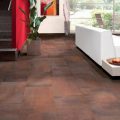Photo: Ken Hayden, Andreas Von Einsiedel, Inside/East News, Nicolas Matheus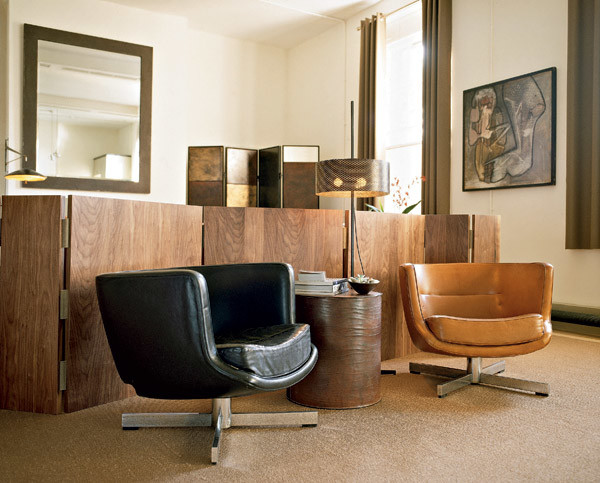 Screen in the room
Screen in the room
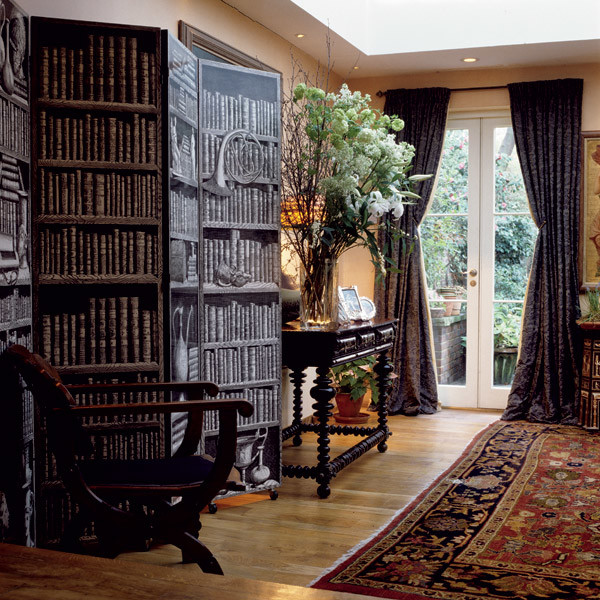

- 1. In the pen. A screen consisting of a multitude of wooden shutters isolates the working corner of the living room without disturbing the integrity of the interior. The secret in its small "growth" - the screen does not obscure the light pouring from the windows. The psychological moment is also important: without encountering obstacles at eye level, we perceive space as a single whole. (Even if it is fragmented into several zones.) Another nice feature of screens is that they serve as a defense against drafts.
- 2. French connection. A screen can not only divide, but also unite. Installed in the wide pane between the windows, it is in the center of attention, preventing the space from “falling apart” into parts. The screen of Jean Cocteau, a couple of sheep and photographs of Pierre and Gilles, bring into the rather conservative interior of this bedroom an element of artistry.
- 3. Collected Works. Decorating screens with fraud paintings is a long tradition. Such an object is capable of not only modeling space, but also filling it with new meaning. For example, with the help of a screen depicting shelves of books, it is easy to turn any room into a reading room. And at the same time to emphasize that the owners of the house are intelligent people and are not indifferent to the printed word.
- 4. Open book. In order to study in detail the artwork on the doors of the Japanese screen, you need to place it at eye level. To do this, you have to either sit on the floor, or hang a screen on the wall. The plot must be "read" from right to left. It is desirable to dim the light while the twilight reigns in Japanese homes. Then the gold on the screen will flicker, not scream, and the colors will be soft and elegant.
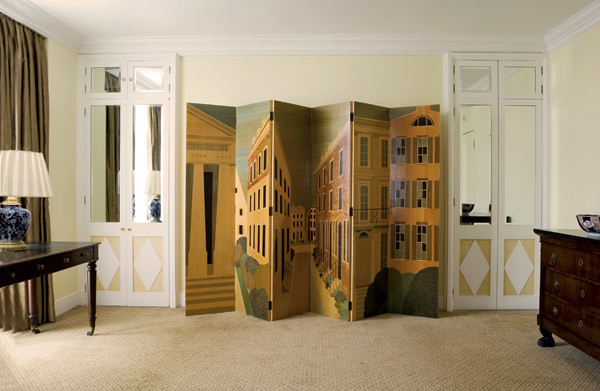

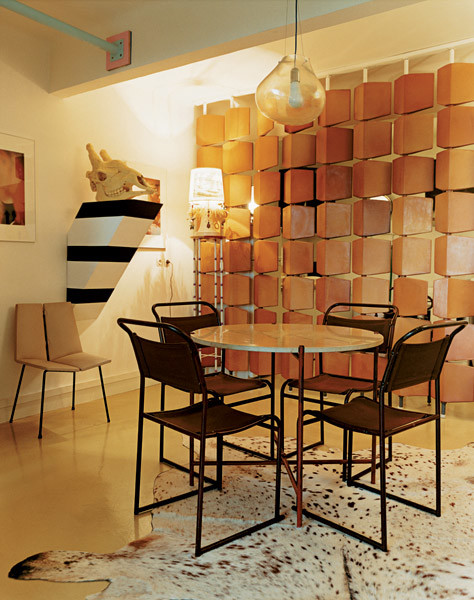
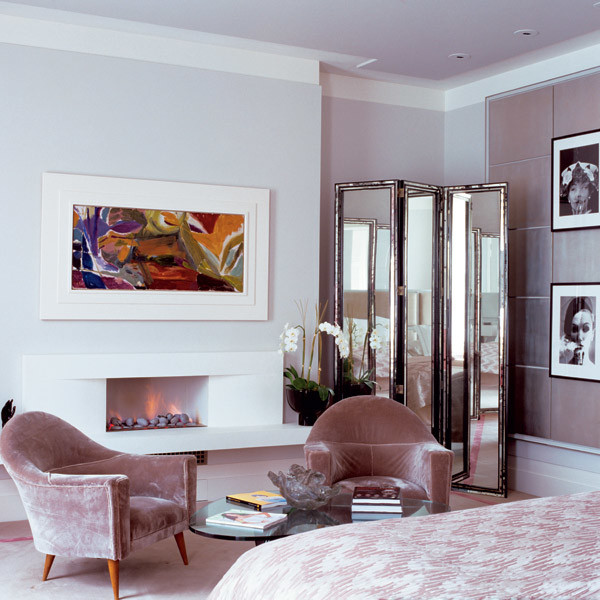
- 5. The third way. This half-empty hotel interior, decorated in neutral colors, had every chance to become one of those transit zones that do not "catch" the eye. The situation was saved by a screen, thanks to which the room acquired a new dimension. Of course, we are not so naive as to take the painting as a real landscape. And yet, the city streets, going to the future, involuntarily suggest: where to go further - right, left or straight?
- 6 Hang in full! To fulfill its original purpose - to intrigue and hide - such a screen can not. But thanks to her in your bedroom will not remain cluttered corners that you want to hide from prying eyes. For greater practicality, a mirror can be inserted into one of the wings of such a mini.
- 7 Divide and rule! Make the kitchen isolated or combine it with the living room? The truth lies in the middle, and its name is a screen. For example, the owner of this Parisian loft uses as a partition the rare Claustra screen, invented in the 60s by the designer brothers Clautier.
- 8. Feed from the corner. This corner represents a typical "dead zone" - the armchairs and a table near the fireplace block the approach to it. The screen does not just "justify" the existence of this corner. Its mirror doors reflect light and visually expand the space. The only problem - the screen is located near the head of the bed. Think carefully whether this neighborhood will suit you: to enjoy your sleepy physiognomy in the morning - entertainment is not for everyone!

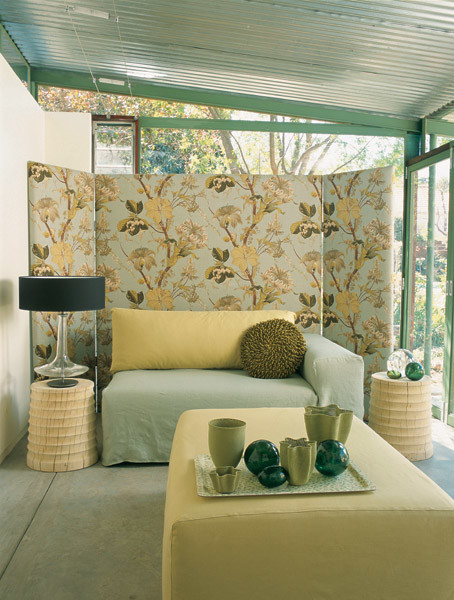
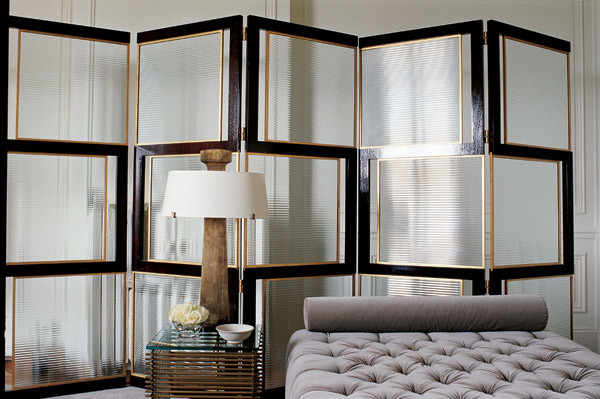

- 9. Holy place. The eternal problem - how to use the space under the stairs - designer Kelly Hoppen decided with the help of a folding screen. The openwork design of black lacquer rings became the backdrop for the yellow "eared" chair. However, in this interior, the screen solves not only decorative, but also spatial tasks - it serves as a “watershed” between the dining and sofa areas.
- 10. Reliable rear. Sitting back to the door or window is extremely unpleasant. In this interior, the problem is solved at the expense of a screen, forming a kind of niche and giving a sense of security. It is not even believed that in front of us is not a cozy old mansion, but a modern open space.
- eleven. Oh times, about morals! Since the screens came to Europe for the first time, the interest in them has waned, then flared up. Another surge occurred in the days of Art Deco, when screens made with varnish, metal and glass came into vogue. In the photo - a typical representative of that era, although it is not antiques, but skillful stylization. The author of the object is a modern American designer Thomas Fizant.
- 12. All the side. Sometimes the screens take on the role of architectural elements (such as columns, niches, etc.), changing the proportions of the room and setting up a solemn mood. Installed on both sides of the bed, they form an alcove.
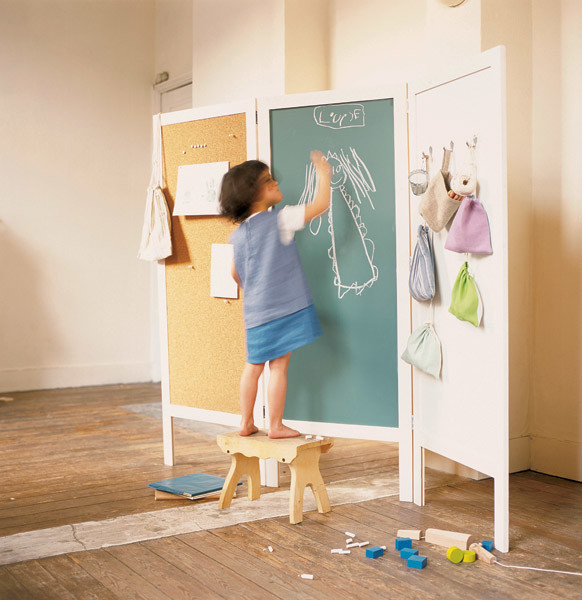
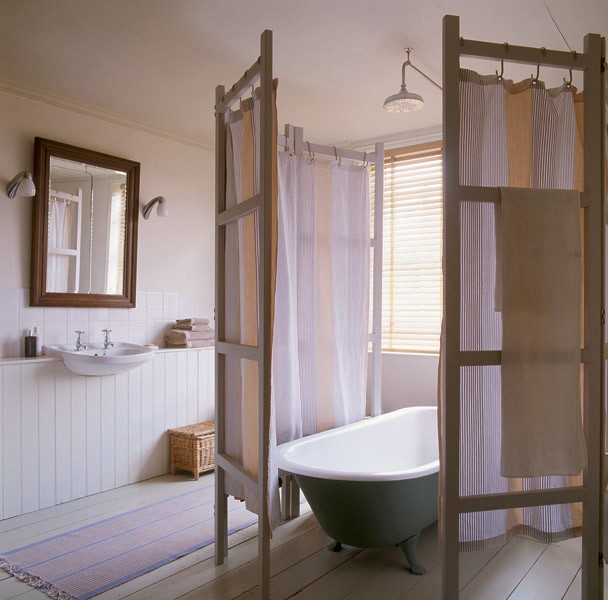
- 13. Up to 16 and older. As they say, comments are superfluous. Before us is an object - useful in all respects. It remains to add that such a screen is useful not only in the nursery, but also in the office or, say, in the kitchen. If you do not like chalk (it crumbles, after all), insert a magnetic board with a special coating on which you can write with markers.
- 14. All the head! Screen often acts as a headboard. Here this idea has been brought to its logical conclusion: the doors are covered with the same fabric as the bed and the upholstery of the chair. But you can do otherwise - to play on the contrast, making the screen a central element of the interior.








